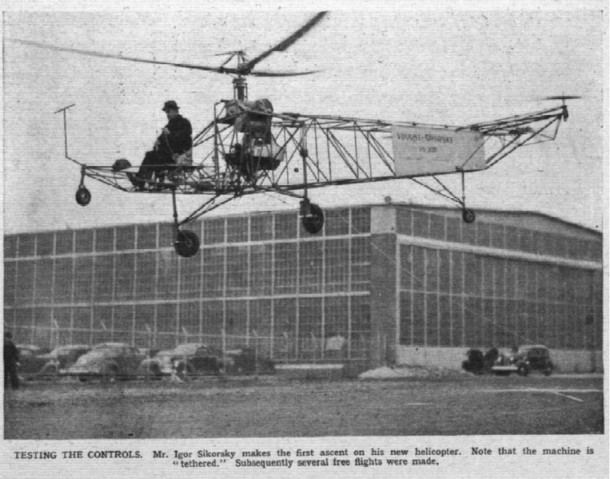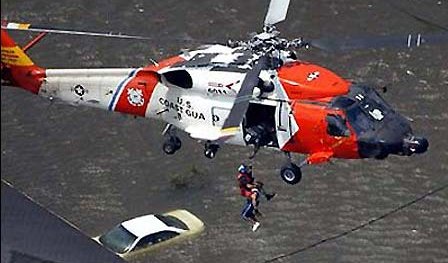Hurricane Helicopter Love
By Scott Spangler on September 11th, 2017 In the aftermath of Hurricane Harvey and the ongoing rampage of Irma (with Jose and Katia on her heels), let’s give a moment of silent thanks to Igor Sikorsky who made the inaugural flight of the world’s first practical helicopter, the VS-300, this week, on September 14, 1939. Think about that for a moment. Where would we be right now if this intrepid designer decided that the uncountable challenges of getting so many interlocking parts to rotate for the common good was insurmountable?
In the aftermath of Hurricane Harvey and the ongoing rampage of Irma (with Jose and Katia on her heels), let’s give a moment of silent thanks to Igor Sikorsky who made the inaugural flight of the world’s first practical helicopter, the VS-300, this week, on September 14, 1939. Think about that for a moment. Where would we be right now if this intrepid designer decided that the uncountable challenges of getting so many interlocking parts to rotate for the common good was insurmountable?
As anyone who’s studied (or attempted to study) rotary wing aerodynamics can appreciate, it is not an east subject. With lead and lag and flap and all the rest, visualizing the relative wind’s relationship with an airfoil that is moving in two directions is not as easy as seeing a fixed wing moving forward in a slipstream delineated with smoky stripes. Painting a picture of it with words is an even greater challenge, which is why it is always easier to make a joke. Take, for instance, the bumble bee. It’s not supposed to fly either, but like the helicopter, it doesn’t know that.
 Thanks to two years as a crewman on a Navy Huey helicopter, first and foremost I’m a dedicated rotorhead. Given a choice (and sufficient funds), I would fly nothing else. But it seems whenever aviators who favor fixed wings run into those who know that rotating wings provide the ultimate in flying fun, it’s time to make fun of helicopters for their fixed-wing failings. They are not very fast, and they don’t fly as far, etc., etc.
Thanks to two years as a crewman on a Navy Huey helicopter, first and foremost I’m a dedicated rotorhead. Given a choice (and sufficient funds), I would fly nothing else. But it seems whenever aviators who favor fixed wings run into those who know that rotating wings provide the ultimate in flying fun, it’s time to make fun of helicopters for their fixed-wing failings. They are not very fast, and they don’t fly as far, etc., etc.
But people stop making these jokes when, say, they are floating in some fast expanse of water and the only sign of humanity is in that whirring machine that was once the butt of their jokes. Then helicopters are pretty impressive flying machines. And I’m sure that every helo crewman who’s endured rotary ridicule at the hands of floating aficionados of fixed wings has been tempted to dangle the horse collar just out of their reach for awhile, just to make a point.
As as we rescue those savaged by Mother Nature and restore lives to some degree of quotidian sameness, remember that helicopters are more than saviors when times are dire, and spread the good word of their unique and essential contributions when times are good. –Scott Spangler, Editor
Related Posts:






